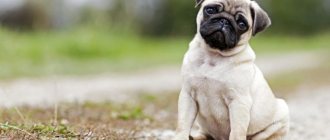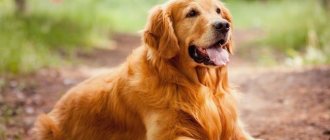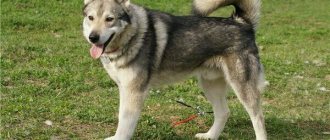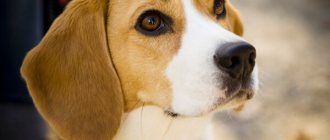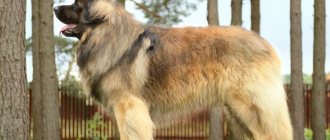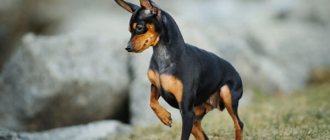Recently, the Indian duck has become one of the most popular birds in households and farming. All thanks to its unpretentiousness to growing conditions, feeding and productive characteristics - high egg production, as well as tasty, tender and healthy meat. Muscovy ducks do not require special care and can lead productive lives in almost any conditions.
Description and characteristics of the breed
Almost all Indian ducks are similar in appearance. Differences occur only in individual breeds, mainly:
- feather color;
- habits;
- fruitfulness;
- egg production;
- taste qualities;
- growing time;
- feeding features.
Appearance
Muscovy ducks have a wide variety, differ in many characteristics, but they have one thing in common - characteristic features related to appearance. Indian ducks have a large body and a wide, hanging sternum.
Indo-ducks have strong, webbed feet, much shorter than those of other poultry. They have large, strong wings that fit tightly to the body and a short neck.
On a small head there is a flat beak, and around the eyes there is a peculiar red growth that distinguishes them from simple ducks. If you touch it, you can smell a faint musky odor.
Indo-ducks' feathers fit tightly together, forming a waterproof coating that gives them a huge advantage when in the water. They love water, especially marshy ponds that are home to many different insects and larvae. It’s not scary if there are no bodies of water nearby; they also feel great on land and can splash around in an ordinary trough.
The color of Muscovy ducks varies depending on the specific breed. These are mostly dark colors with a greenish or purple tint.
As for weight and size, they do not have any significant differences. The weight of a drake can reach up to 6 kg, and females - up to 4 kg. However, wild ducks are 1.5-2 times smaller than domesticated ones.
Varieties of Indo-ducks
Many novice farmers or ordinary housekeeping enthusiasts cannot decide on the breed of Indo-ducks. Each of them has its own characteristics, so you need to correctly and profitably choose the breed that is more suitable for breeding or keeping in specific conditions. Muscovy ducks come in the following types:
- Black Indians. They fully live up to their name, as their paws, metatarsals and beak are also black. Only a greenish tint on the back and a purple tint to the rest of the feathers separates it from complete blackness. Their eyes are brown.
- White Indians. They have the appropriate color of feathers, without any shades or tints. The duck's beak is pink with lightening at the tip. The paws are yellow and the eyes are blue-gray.
- Black and white Indian ducks. They have appropriate shades, in which a dark color with pronounced tints predominates. White spots appear on the sternum, neck and head. Their eyes have a light brown tone. The legs are yellow, sometimes with black spots, and the beak is red.
- Brown wild breed . It has a beautiful and rich brown color. White feathers may appear on the wings, the number of which increases as the duck grows. The red beak has dark spots on its tip. The eyes, like the paws, are brown. Sometimes the coloring may be slightly different - brown feathers are green, and there are white feathers on the chest and head.
- Blue and wild blue duck . This breed is very rare and actually has blue feathers with darkening at the edges. The legs and beak of this duck are black. Eyes with a brown tint. The wild Muscovy duck has a similar feather color, but with a narrower rim. And when fully ripe, the upper cover turns white, and the black flat beak changes color to lilac-red. Paws and eyes are the same color.
Black Indian duck
White Indian
Black and white Indian duck
Brown Indian Duck
blue duck
Experienced poultry farmers claim that the brighter the color of the duckling, the more productive it will be, so when choosing ducklings, you should pay attention to their appearance.
Lifestyle and behavior
Domestic birds get used to their owners and their territory, so they do not go far and do not cross borders. This is one of the advantages of Muscovy ducks when breeding them. In addition, they do not need to be constantly grazed; they quickly get used to their route and can independently move around familiar territory.
This type of bird is very calm, but with a large number of them in one area and the presence of several adult drakes, they can show aggression towards each other. This usually happens due to feeding. Stronger males can kill weak ones, and sometimes even young offspring. In stressful situations, the female may stop laying or abandon her nest.
Indian women love fish, so they are attracted to anything shiny. It is better to remove all objects that remind them of a tasty treat: broken glass or mirrors, metal waste and other debris.
Range and habitats
In the wild, Indian ducks can be seen near lakes, rivers and other fresh bodies of water. They form into small groups to give birth to further offspring. They rarely gather in large flocks, and practically do not make flights.
Their feather lubricant is not as oily as that of other duck species, so they do not like to swim in cold water. In winter, it is dangerous for them to swim, since at sub-zero temperatures the wings freeze and the bird can drown.
Origin story
Muscovy ducks live naturally in the forests of South America and Mexico. Their lifestyle is significantly different from ordinary duck species. Musks are sedentary birds that settle along river banks, preferring to hide in dense vegetation.
Indian ducks spend more time on land than in water. They fly well and can climb trees thanks to the sharp curved claws on their paws. The bird also makes nests in trees, choosing spacious hollows in old trunks.
Muscovy ducks feed mainly on grass and seeds. Animal food (tadpoles, crustaceans, fry, insects) is present in the diet insignificantly.
The bird got its name “musk” because of the characteristic leathery growth on its beak. It is believed to secrete oil that smells musky. In males the growth is larger, in females it is almost invisible. The first white travelers who met the bird called it a wood duck because it raised its chicks in nests in trees.
The origin of the second name - “Indoutka”, or “Indian duck” - is associated with the fact that Europeans first met these birds when they saw them among the local Indians, who domesticated ducks long before the arrival of the conquerors.
Some people mistakenly believe that the turkey duck is the product of crossing a turkey and a common duck, which is why the bird has a leathery growth characteristic of turkeys on its head. But this is nothing more than a delusion.
Another popular name for these ducks is mute ducks, given to the bird for its characteristic hissing. These birds do not know how to quack.
Musks were brought to Europe in the 16th century, then the breed spread further. In our country it gained popularity at the end of the 20th century. Since then, the number of Indian ducks in Russia has only increased due to the breeding of birds of different varieties and colors.
Advantages and disadvantages of Indoutka
Breeding indo-ducks does not require special knowledge and skills, but it has its pros and cons. The advantages include the following factors:
- resistance to various diseases, which has a greater impact on the survival of young offspring;
- unpretentiousness to feeding;
- high egg production;
- feel great in any environment;
- Indian ducks are good brood hens, even for hatching other bird species;
- delicious dietary meat.
As for the disadvantages, there are much fewer of them than advantages:
- small ducklings can peck at each other if the necessary conditions are not provided;
- addiction to shiny objects;
- slow growth and weight gain.
About the maintenance and breeding of the Muscovy Duck, watch the video below:
Wing clipping
Don't forget that Indian ducks, especially blue ones, still have the instinct to fly. Therefore, timely trimming of the wings is a guarantee that the bird will not leave the aviary. Only the flight feathers (tubular feathers) are trimmed.
Using sharp scissors, cut the feathers approximately to the middle. To prevent the duck from resisting and getting injured during trimming manipulations, it is enough to hold it tightly between your knees and straighten the wing.
Direction of breed breeding
Depending on the purpose for which musk duck breeds are raised, their living conditions do not change, but the period of keeping and feeding is completely different.
Egg production
On average, an adult Muscovy duck produces about a hundred eggs per year. If all the necessary conditions are created, this figure can increase to 120 pieces, and each egg will have a mass of 60 to 70 g. For this, the bird needs a warm atmosphere in winter, as well as regular maintenance of cleanliness in the poultry house.
They need good lighting and ventilation of the room. If we add to this a list of useful substances and vitamins, then pets will certainly become record holders for laying eggs.
Under favorable conditions, adults begin to lay eggs from the beginning of the year, otherwise the difference will be about two months. Young ducks begin to lay eggs after six months, gradually increasing the number of eggs every month. At first, the monthly clutch is about 8 eggs, and when the bird reaches 12 months of age, the number of eggs reaches 16 pieces.
Egg laying is a cyclical process. After intensive laying, which lasts about 5 months, a molting period begins for 2-3 months.
Raised for meat
Young offspring raised for meat, if properly fed, gain weight in the first six months. The weight of a drake is up to 4 kg, and that of ducks is up to 3.5 kg. If the house is cold and damp, they will gain weight less quickly.
Many people try not to keep the bird for long. Indo-ducks can gain 2.5 kg within 2-3 months, which allows them to be sent for slaughter. At the same time, it is important to maintain cleanliness, observe conditions, and adhere to feeding rules so that the birds do not get sick. Otherwise, they may not gain weight well, and their meat will not be of such quality and taste.
Interesting Facts
Mute birds not only fly well, but also climb vertical surfaces well with the help of sharp claws. To prevent the grown-up young from traveling, the flight feathers on one wing are trimmed. It is better to make a fence in a duckling's enclosure not from a mesh, but from a picket fence or solid pieces of slate or iron.
If you combine two ducks with broods in one room, the stronger female can take the children from the weaker duck and raise them herself.
Sitting on the nest and raising the young, the duck shows courage and selflessly protects the offspring. There are known cases when musk hens killed large rats with their beaks that wanted to steal eggs.
A day old duckling should see its first food in motion. In nature, ducklings immediately begin to hunt for insects after hatching. At home, food is poured on top of the backs of the chicks. The food rolls off the back onto the floor, the ducklings see the movement and grab the pieces. Having tasted the food, they already begin to eat from the bowls.
Muscovy duck is popular and in demand in small and large farms. Due to the unpretentiousness of Indian ducks in keeping and feeding, breeding this bird is economically profitable. An incubator is not required to produce ducklings, as female musk ducks are excellent brood hens and mothers.
Features of breeding and raising Muscovy ducklings
Regardless of the method of breeding ducklings, to obtain a brood, select eggs from the first days of laying. Then carefully select them according to their characteristics - so that they are the same shape, weight and size.
The most fertile eggs are those collected within 14 days. When collecting, store them lying on their side at a temperature of 11 degrees.
Formation of broodstock
For propagation in the traditional way (by a brood hen), arrange a separate queen cell, which will contain 3-4 females and a drake. Then build a nest by placing dry leaves, sawdust or hay there.
Do not touch eggs selected for hatching with your hands. Indian ducks are excellent brood hens, so when there are 10 eggs in the nest, the female sits on the nest.
There should be water and food in the room so that the hen eats periodically. As the eggs warm up, she regularly turns the eggs over and moistens them with water.
The hatching period for ducklings is 32-35 days.
Breeding ducklings by a hen
Despite the fact that Muscovy ducks are good brood hens, the ducklings cannot do without the help of their owner. After the first chicks hatch, the duck continues to sit in the nest until the entire brood has hatched. Therefore, babies need to be placed in a warm, cozy place and provided with good lighting. A regular incandescent lamp is suitable for this, which will speed up the drying process.
In the first days, feed the ducklings hard-boiled eggs. At the same time, chop them and sprinkle them on their backs, since during this period they only react to movement. When they begin to move, the crumbs roll off and the chicks, noticing them, eat them.
After the end of the period allotted for laying, the unproductive eggs become unusable and the duck leaves the nest to take care of the offspring. When the day-old ducklings have dried and become stronger, place them under the hen.
In the morning she can already walk and feed them. After a week, they can already take baths, but before the procedure, a caring mother lubricates their feathers with her fat.
Incubation
When incubating ducks, the device must be heated to 38 degrees. After this, lay out the fertilized eggs in a horizontal position. Lay the largest ones first, and after 5 hours the rest. It is better not to use small eggs.
The incubator must be provided with the necessary air humidity. If such a function is not provided, then do it as follows - spray the eggs with a weak and warm solution of manganese twice a day. This cools the eggs and speeds up metabolism.
Eggs need to be turned and swapped periodically to ensure even heating. Hatching eggs may take a little longer to hatch than brood eggs. At the end of the period, gradually reduce the air temperature, check the eggs and help the ducklings hatch by opening the shells.
Place the hatched chicks in a brooder. If they are provided with proper care within 10 days, they will grow up strong and healthy.
Feeding and keeping chicks
Their further development depends on the correct feeding of Muscovy ducklings. The first step is to take care of favorable conditions in the poultry house. To do this, you will need to regularly maintain cleanliness and, if necessary, disinfect. This is also required for drinking bowls and feeders.
A review of duck drinkers and instructions for making them can be found in this article.
In the first week, the daylight hours for ducklings should be at least 18 hours, so the house must be equipped with appropriate lighting. As they grow older, daylight hours should be reduced by 1 hour every week. This is necessary for full development, since as Indian ducks grow older they need metabolism, which occurs better in the dark. If these rules are not followed, rickets may occur.
To develop, ducklings need adequate nutrition. From the very beginning, feed them grain mixtures and foods containing starch, protein and calcium:
- shell rock;
- chalk;
- starter feed;
- grain mixtures;
- corn, bone and barley flour;
- chopped meat and fish waste;
- boiled potatoes;
- fresh carrots.
Don't forget about greenery. If it is possible to walk on fresh, lush grass, then this will be the most acceptable option. The ducklings themselves will find the suitable and healthy greens they need for full development.
Feedback from farmers. Is this activity profitable?
Experienced farmers note that it is more profitable to breed indo-ducks than geese or Pekin ducks. Their meat is tastier, but may not appeal to those who do not like dry meat. They do not require a body of water, behave quietly and calmly, and do not irritate their neighbors. The bird is not capricious and is suitable for beginning poultry farmers, as well as for those who want to have a small passive income.
It is better to raise chicks yourself; in this case, their survival rate will be higher than those purchased on the market. The female’s weight is small, but this is compensated by the high percentage of drakes, of which there are more than half in the brood.
According to farmers, it is better to raise turkey chicks yourself
Owners of private farmsteads who raise indo-ducks for themselves recommend this particular breed of poultry to beginning poultry farmers for breeding in their summer cottages. She is able to provide her family with meat and eggs at fairly low maintenance costs. Along with this, the pugnacity of drakes is noted, which can drive away weaker birds from feeders.
Where to sell products
You can sell surplus meat and eggs through advertisements, at the market, or take them to stores or public catering outlets. Thanks to its taste, there are no problems with the sale of turkey meat. You can use the Internet to increase sales.
Payback period
If everything is done according to the rules, then breeding Indian ducks will certainly bring profit. This breed does not require complex care or special conditions. There is no need to spend large sums on poultry house equipment.
The biggest cost when keeping Indian ducks is the purchase of feed and vitamin-mineral supplements. When breeding turkey ducks for meat, the profitability is 70%. When breeding ducklings using an incubator, the farm can reach self-sufficiency within 6-7 months. And the costs of building a farm will pay off within 2 years.
Income and expenses
When maintaining a small poultry house, in which there are 8-10 females and 2-3 drakes, taking into account the cost of indo-ducks, the arrangement of the poultry house and the purchase of feed, it will take approximately 100-150 thousand rubles to form a business. Breeding incubators in an incubator will require more material investments, but the costs will pay off faster.
Considering that poultry raised for meat is slaughtered at a weight of 2-2.5 kg, and the average selling price is 250 rubles. for 1 kg, then the cost of one duck will be 90-120 rubles. for 1 kg.
With proper planning and a serious approach, a farm with a population of 100 Indian ducks, raised in conditions close to home, can bring a profit of up to $250 per month.
Conditions of detention and care
Provide the Indian duck with proper living conditions, as well as proper care. This is the only way she can grow quickly and have good egg production.
Premises requirements
To keep musk ducks, you do not need to build premises with a stove or heating, especially electric. It is enough to insulate the house with straw, hay, wood and other wood materials. The main thing for this bird is comfort and cleanliness.
The size of the room should be selected taking into account 3 birds per square meter. In addition, it should be well ventilated. If the owner keeps several dozen birds, then, if possible, it is better to place them in separate families, as in the wild.
Nutritional Features
The diet of the adult and younger generation of musk ducks is practically the same. The only difference is in the food supply, since ducklings in most cases require crushed food. Indo-ducks can be fed:
- grain crops - wheat, barley, corn;
- wheat bran;
- greens - beet leaves, meadow grass;
- boiled potatoes;
- grated beets;
- cottage cheese;
- carrots;
- bone meal;
- fish and meat waste;
- bread yeast;
- elements containing calcium - chalk, granite chips, crushed shells, table salt.
Indo ducks' favorite treats are kitchen scraps, milkweed and dandelion greens, corn, beet tops and boiled potatoes.
How to make a nest
Separate “apartments” must be prepared for laying hens and future mother ducks.
- For the nest, you can take a thick cardboard box or put together a box measuring 30*45 cm from scrap materials.
- It is better to place the nest in a darkened corner.
- For insulation, lay natural fabric on the bottom. Synthetics are contraindicated.
- You can “house” 3 Muscovy ducks in one nest. Oviparous females must be separated from egg-laying females.
Important! Do not allow ducklings to get into a nest with females hatching eggs. There is a risk that the “mother” will abandon the clutch and begin caring for other people’s chicks.
Duck diseases
If owners do not show enough attention to their pets, they may get sick. Most often, musky ducks are exposed to infectious, viral and parasitic diseases:
- rickets;
- lack of vitamins;
- cloacite;
- catarrh and goiter blockage;
- vitelline peritonitis;
- intestinal poisoning;
- cannibalism.
If you follow all the rules and conditions for keeping poultry and take preventive measures, then the immune system of Indian ducks will not allow various diseases to arise.
What is the difference between wild and domestic
Strict selection and fixation of any breed of Indian ducks was not carried out. Therefore, they are distinguished by color, but there is no big difference in egg production and weight.
Wild Indian ducks adapt better to changes in the external environment and are more resilient, and also gain weight more quickly. Poultry is more capricious, but their meat is more valuable. They grow larger and reach maturity earlier.
Profitability of breeding musk ducks
Many livestock breeders, farmers and household owners know that breeding indo-ducks can be a very profitable business if done correctly. The meat of this bird is valued for its taste characteristics and dietary benefits.
This breed of bird does not require special care and is not picky about feeding. They do not need to be constantly monitored; they are completely independent and can move to and from a pond without the participation of their owners.
Poultry house equipment does not require significant costs, especially if you make feeders, drinkers and other amenities yourself. The only costs are grain feed and vitamins. In any case, the money spent will soon pay for itself and bring in a good income.
According to experts, the profitability of breeding turkey ducks for meat is about 70%.
Nutrition
It feeds on plant and animal foods. It is best to make food in the form of a wet mixture. You finely chop grass, fresh tops, greens, household waste, mix it all, add grain - and the mash is ready. They love to eat corn.
Before feeding barley to indo-ducks, it must first be soaked and then served with plenty of drink. They themselves can catch insects and worms from the existing reservoir. That is why it is advisable to have a small pond nearby. Or dig it yourself.
When feeding, follow some rules:
- Do not feed them too hot food; even in cold weather, you need to cool the food to room temperature.
- Do not give a lot of food at once, especially if you keep them with other ducks. Don't allow fights between them. Maintain a balance in your diet, include mineral feed, and monitor the availability of water.
- Add vitamins to your diet. They need vitamins A, C, B, D, E, K, and H.
Advantages of mullards
Breeders, crossing Muscovy and Pekin ducks, have achieved excellent results. Ducks born after such crossing are called mullards. They are infertile and cannot have offspring, but at the same time they have undeniable advantages:
- Early ripening;
- Hardy;
- They are characterized by high productivity (meat, eggs);
- The unusually tender liver of mullards is used to prepare the most delicious and expensive dish, foie gras.
Against the background of such a list, the fact of infertility does not seem to be a big disadvantage or obstacle to breeding these birds.
Getting offspring
An Indian duck lays from 100 to 120 eggs per year. The weight of each specimen reaches 60-70 g. For normal laying and existence of the bird, the barn maintains above-zero temperatures all year round and provides artificial lighting.
It is better to obtain offspring naturally. Almost all poultry farmers express a similar opinion in their reviews. Young animals are more resilient and have strong immunity. To obtain a brood, eggs laid in the first 14 days after the start of laying are collected. Store at a temperature of +11°C. Eggs cannot be washed. When the required amount is collected, they make a lining for the hen.
Important! To obtain offspring, a parent herd of 1 drake and 3 females is formed.
Ducklings will begin to hatch on day 32. The process will last about 3 days, so the emerging chicks are collected in a box and heated with a lamp. When the allotted time is over, the hen leaves the nest. Mothers return the chicks collected and dried under the lamp. The duck takes care of its children independently.


